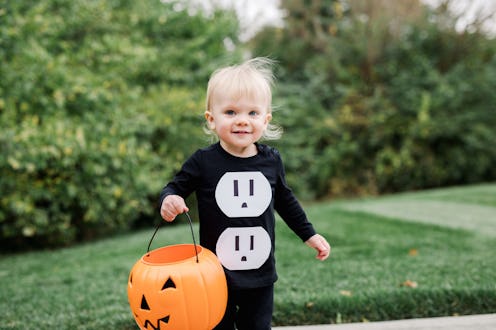So, trick-or-treating is kinda, sorta the best thing ever. When we were told that we could no longer go trick-or-treating on Halloween by our parents, we likely put up a fight. (I mean, yeah — there are better things for a teen to do, but passing up on candy, and time outdoors with friends, is a major loss... even though we could have totally just bought our own treats by then.) Trick-or-treating is such a common event that we probably never actually questioned why we do it. I mean, who actually thought of going door-to-door, interacting with our neighbors in such a peculiar way?
As it turns out, children have been knocking on doors in costume for quite some time. The practice is actually a bit of a Celtic tradition — by dressing up and presenting yourself as a demon, you were able to blend in and camouflage in case you came face-to-face with a real demon. At least, that's how it's said to have gotten its start. Like most traditions, there's still a bit of confusion over how trick-or-treating, as we know it today, fully originated. And also like most traditions, it's definitely changed up a lot since it initially started. (If not, princess costumes likely wouldn't be a thing. Can you imagine such a world?)
Trick-or-treating truly got a push during the '20s and '30s. The phrase "trick or treat" was first traced back to Nov. 4, 1927, in a print copy of Canada's Letbridge Herald. "The youthful tormentors were at back door and front demanding edible plunder by the word 'trick or treat' to which the inmates gladly responded and sent the robbers away rejoicing," the publication stated.
Of course, there's much more to it. And as expected, religion is involved. All the way back in 1000 A.D., Christians found a way to celebrate "All Souls Day," which was a way for people to honor the dead.
Usually the day was celebrated, and during the merriment, it was very common for poor individuals to knock on the doors of wealthy households, and receive "soul cakes," which were pastries, in exchange for a positive prayer or two for the household's deceased relatives. Soul cakes, which include butter, flour, sugar, and no haunting spirits whatsoever, are often still made today to celebrate both Halloween and All Souls Day.
But, uh — where do the tricks come in? Easy. In certain countries, like Ireland and Scotland, people went door-to-door and performed a "stunt" that would award them a small, healthy snack. This was called "guising" back then, and could very well be where the "trick" originated from. (Even though, it'd make more sense to say "trick and treat," right? Or at least "trick, then treat.")
These days, trick-or-treating has morphed into something a lot more fun. Not only is it a social event for neighborhood kids to come together dressed in their Halloween best, but in some cases, those soul cakes have evolved into (gasp) full sized chocolate bars.
Image Credits: Kelly Knox/Stocksy; Giphy (2)
